When I came across the Maryknoll Fathers & Brothers and Maryknoll Sisters coats of arms in the September 1923 issue of The Field Afar, I had no idea the amount of information that I would learn about the subject of heraldry which is quite interesting. Ecclesiastical heraldry dates back to the Middle Ages, though it developed significantly in the 17th century with the introduction of a system of ecclesiastical hats. See, I already digress and must try to stay out of the weeds as I navigate this blog post.
Below on the left, is the article from the September 1923 issue of The Field Afar that piqued my interest. You can see the Maryknoll Fathers & Brothers (Catholic Foreign Mission Society of America) coat of arms on the left and the Maryknoll Sisters (Foreign Mission Sisters of Saint Dominic) coat of arms on the right. As I began delving deeper into this topic, it wasn’t too long before I discovered a marked-up copy of the same article pointing out the error in the depiction of the Maryknoll Sisters shield (right). As noted, the black and white triangles should be reversed.
With that correction properly noted, let’s go back to the creation of these coats of arms. They were designed by Rev. J. A. Nainfa, S.S., author of Costume of Prelate of the Catholic Church, and Pierre de Chaignon la Rose, an American heraldist and heraldic artist who was an expert in ecclesiastical heraldry. They are both beautifully designed but what do their various components symbolize and how do we describe them?
Because I know I was extremely confused by some of the terms used when first reading this article, I’d like to begin by defining some terms common to heraldry. These definitions were provided by Britannica, English Heritage and Oxford Languages.
Field – A background layer. The field is usually the first part of the coat of arms described in the blazon
Ordinaries – The simple geometric shapes used in heraldic shields, against a color, metal, or fur background
Fess – An ordinary in the form of a broad horizontal stripe across the middle of the shield
Gyrons – A triangular ordinary formed by two lines from the edge of the shield meeting at the fess point at 45 degrees.
Gyronny – (of a shield) divided into eight gyrons by straight lines all crossing at the fess point
Tincture – Inclusive term for metals, colors, and furs used in coats of arms
I will also share with you this helpful guide that I found in the archives while researching. It is a guide to the conventional system of dots and lines used to represent nine colors (argent [silver], gules [red], etc.) in black and white imagery, in this case, the article. Used since the 16th century, the guide was developed by Sylvester Petra-Sancta, an Italian Herald.
With our terms defined and color guide reference ready, let’s get back to the descriptions of the Coat of Arms, starting with the Maryknoll Fathers & Brothers. The September 1923 issue of The Field Afar states that “the blazon of the Catholic Foreign Mission Society is argent, a cross quarterly, azure gules; which means a white field with opposite quarters of the cross in red and azure.”
In Maryknoll Bishop Thomas J. Danehy’s Consecration Booklet the Society Coat of Arms is described as such:
“In the coat of arms of the Maryknoll Fathers, the distinctly American character of the Society is displayed by red, white and blue tinctures, and the cross indicates the mission of the Maryknoll Fathers to preach Christ Crucified to all nations in accordance with the divine command ‘Going therefore, teach ye all nations, baptizing them in the Name of the Father and of the Son and of the Holy Ghost.’”
In the Maryknoll Sisters Legacy & Culture Collection, there is a document that focuses on the Coat of Arms of the Maryknoll Sisters of St. Dominic:
“The mission cross of red and blue (red for zeal and charity, blue the traditional color of Our Lady) has been superimposed upon the black and white shield of the Dominican Order (black for penance, white for purity) to form the shield of the Maryknoll Sisters of St. Dominic.
Blazon:
Gyronny of eight, sable and argent, over all a cross quarterly azure and gules.
Explanation:
Gyronny of eight is the field of the Dominican Arms. Sable (black) and argent (silver) are the Dominican colors. Replacing the cross flory counterchanged of the Dominican Arms we have the cross quarterly azure (blue) and gules (red) from the Arms of the Catholic Foreign Mission Society of America, thus identifying us as Maryknoll Dominicans.”
To give you an example of the Dominican Arms, I have drawn a version of their Coat of Arms:
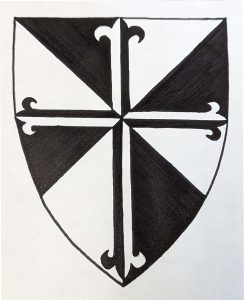 You can see that the Maryknoll Sisters Coat of Arms shares the same field as the Dominican Arms. While researching this I also ran into the issue of the Dominican colors being referred to as black and white, as well as black and silver. It also does not help that argent refers to either silver or white. The closest I could come to getting a definitive answer on this question was in The Coat of Arms Of The Order Of Preachers by Bro. Charles M. Daley, O.P. In this article found in Dominicana, he talks about different versions of the Dominican Coat of Arms over time. He states that “the correct coat of arms of the Dominican Order is without a doubt, the one used today, consisting of a black and white “lily cross” with four black and four white triangles, called gyrons. In heraldic blazon it reads: Gyronny of eight, sable and argent, over all a cross flory counterchanged.” (Daley, p. 36)
You can see that the Maryknoll Sisters Coat of Arms shares the same field as the Dominican Arms. While researching this I also ran into the issue of the Dominican colors being referred to as black and white, as well as black and silver. It also does not help that argent refers to either silver or white. The closest I could come to getting a definitive answer on this question was in The Coat of Arms Of The Order Of Preachers by Bro. Charles M. Daley, O.P. In this article found in Dominicana, he talks about different versions of the Dominican Coat of Arms over time. He states that “the correct coat of arms of the Dominican Order is without a doubt, the one used today, consisting of a black and white “lily cross” with four black and four white triangles, called gyrons. In heraldic blazon it reads: Gyronny of eight, sable and argent, over all a cross flory counterchanged.” (Daley, p. 36)
It is most certainly a lot of information to take in regarding these two distinctive, yet related, Maryknoll coats of arms. Hopefully, like me, you’ve gained a baseline vocabulary for the world of heraldry, discovered how to describe and interpret these two shields, and enjoyed this brief exploration!

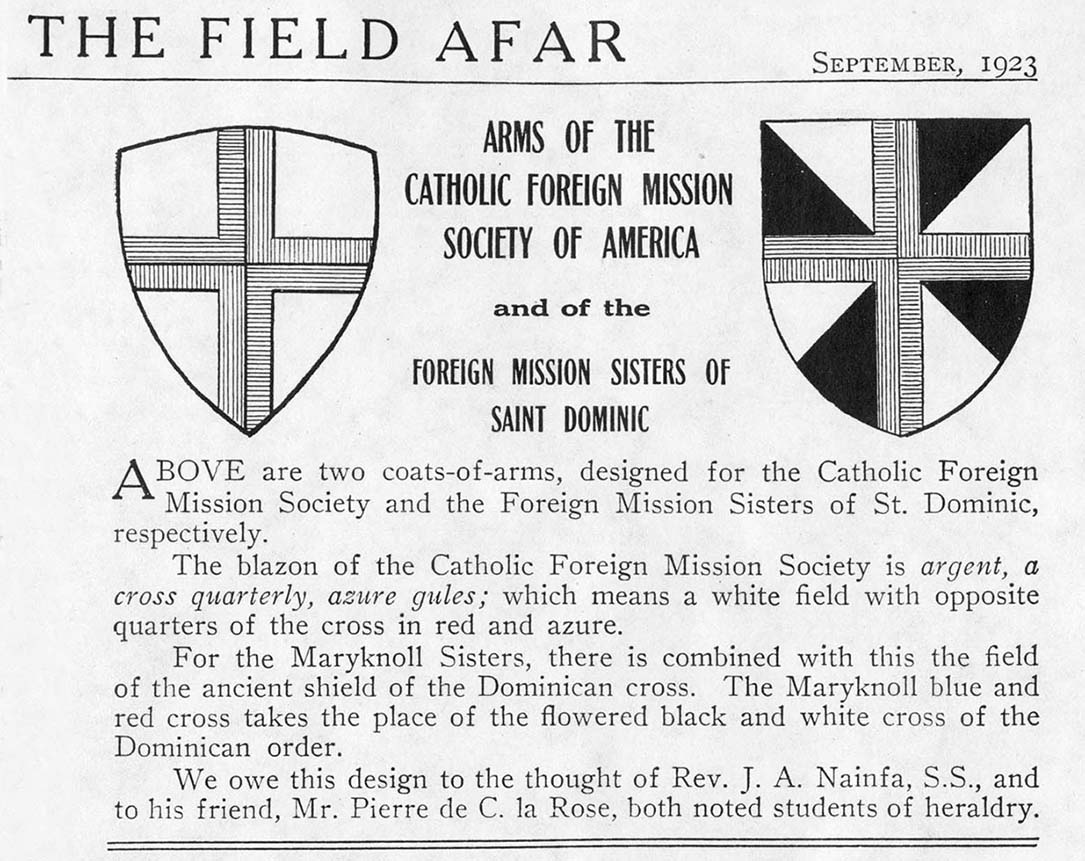
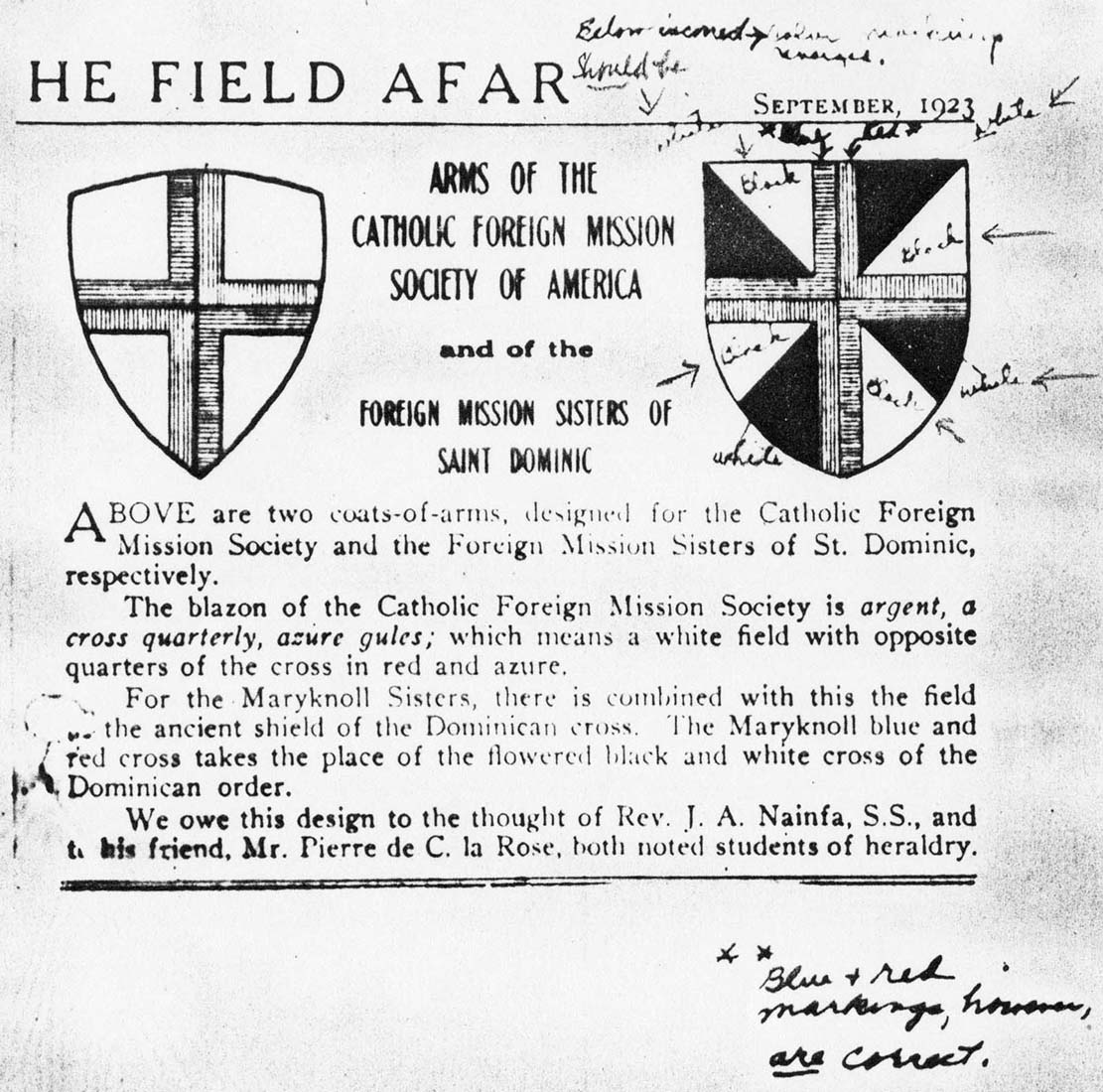
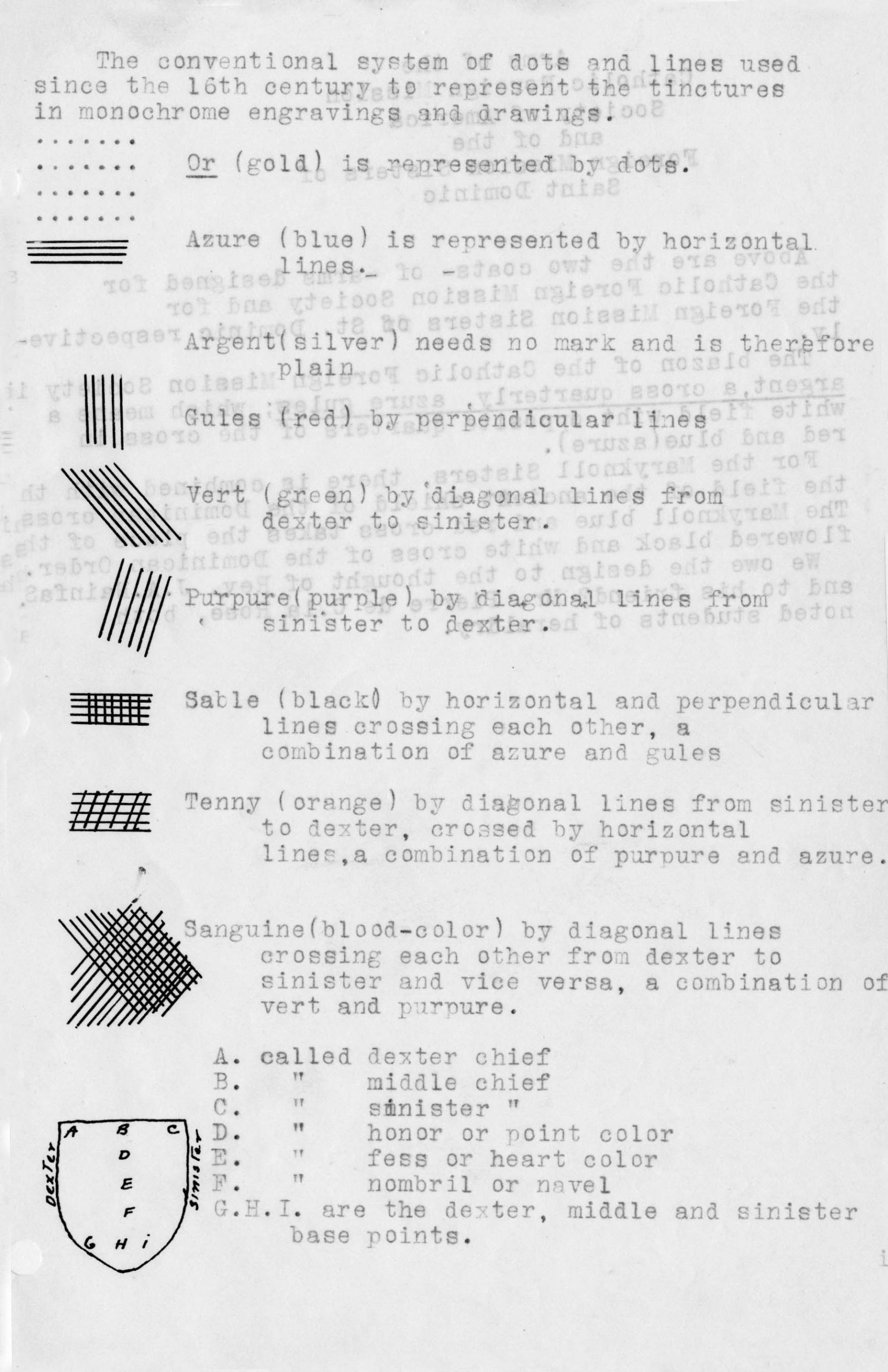
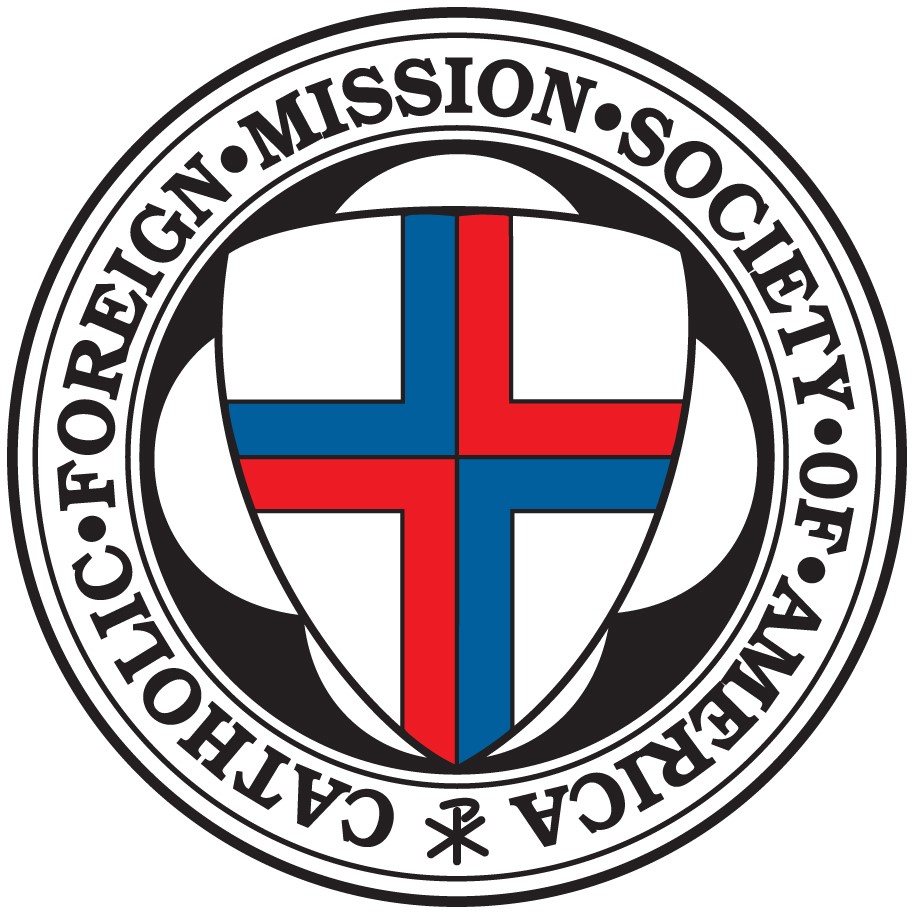
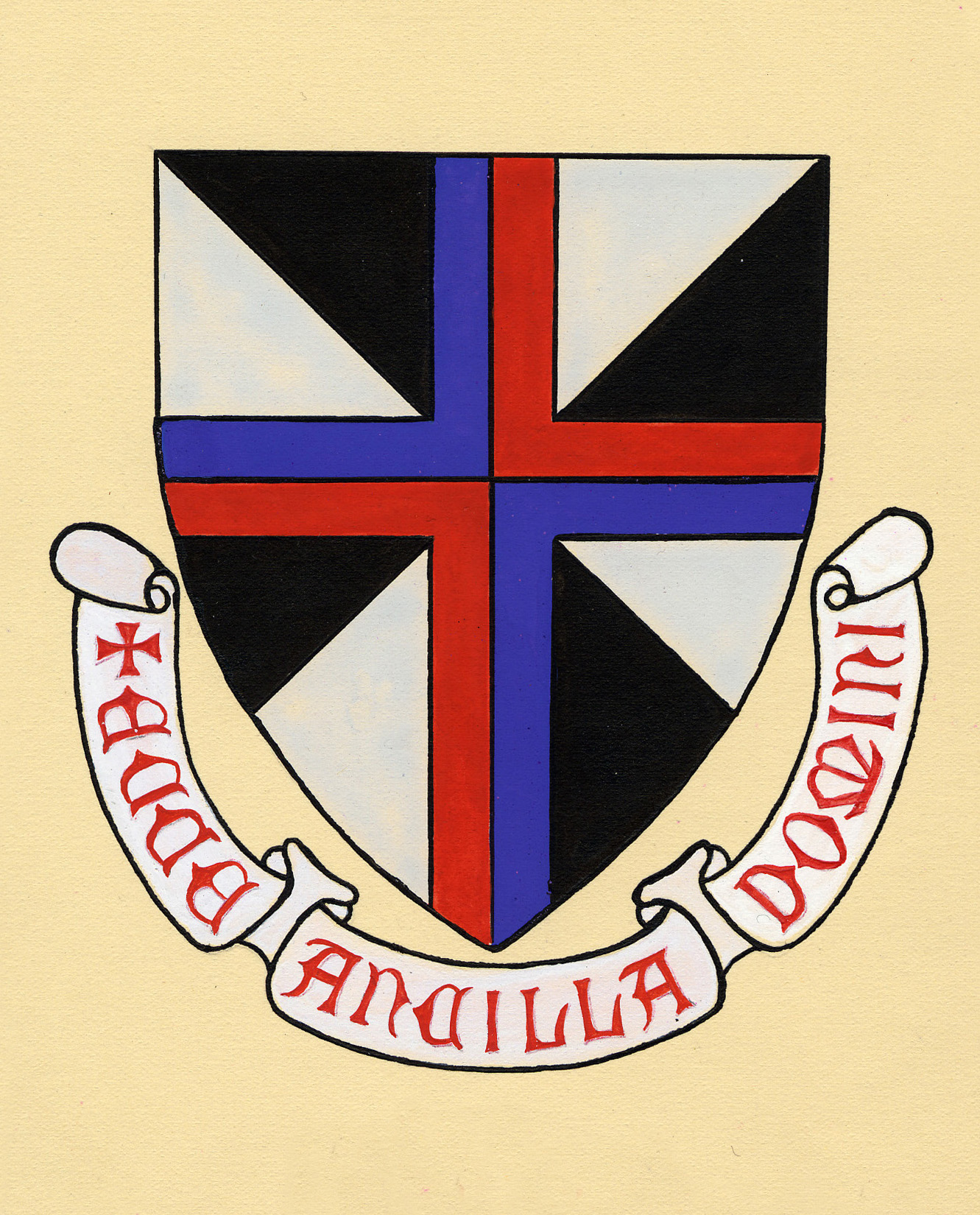
Thank you for sharing! I’ve been researching la Rose for 10 years and posted about these attractive arms during the pandemic in 2020. A link to my analysis is:https://walsinghamwanderings.blogspot.com/2020/07/variations-on-theme-pierre-de-chaignon.html